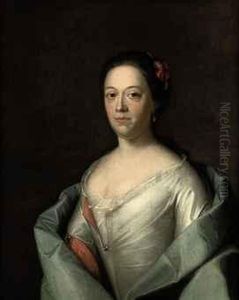Bernardus Accama I Paintings
Bernardus Accama was a Dutch portrait painter who lived during the 18th century. Born in 1697 in Friesland, a northern region of the Netherlands, Accama became well known for his work as a portraitist in the city of Leeuwarden, which was at that time the capital of Friesland.
Accama's early life details are not well-documented, but it is known that he gained a reputation for his portraiture skills. He likely received his training from local artists or through an apprenticeship, which was a common practice for artists at the time. By the 1720s, he had established himself as a skilled painter and began to receive commissions from the wealthy and influential members of Frisian society.
Throughout his career, Bernardus Accama painted portraits of numerous prominent figures, including members of the Orange-Nassau family, who were the stadtholders of the Dutch Republic. His style was typical of the period, characterized by an attention to detail and an emphasis on the social status and character of the sitter. Accama's portraits are noted for their realistic representation and the dignified portrayal of his subjects.
Not only was Accama a portraitist, but he also worked on historical and biblical scenes, although those works are less known and not as widely recognized as his portraits. His works give us insight into the fashion, culture, and people of the Dutch Republic during the 18th century.
Bernardus Accama's legacy is his contribution to Dutch portraiture. He captured the likeness and the essence of the Frisian elite, leaving a valuable visual record of his time. Accama passed away in 1756 in Leeuwarden, leaving behind a body of work that continues to be studied and appreciated by art historians and enthusiasts of Dutch Golden Age painting.
